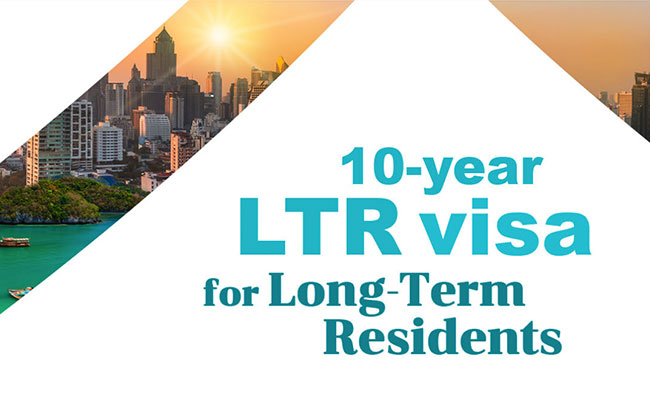With a pet to Phuket: How to organize transportation correctly
Are you planning to import your pet to Thailand? Detailed instructions for transporting cats, dogs and other pets: paperwork, Thai authorities' requirements, airline rules, modes of transportation, Import Permit and customs formalities. A complete guide for pet owners.

Are you planning to bring your cat, dog or other pet to Thailand?
Then it is important to prepare in advance: the country's authorities strictly regulate the import of animals.
To avoid problems at the border, you will need to collect a package of documents and strictly follow the established rules.
Basic requirements for importing pets into Thailand
If you are going to bring a cat, dog or other pet to Thailand, you must prepare a set of required documents in advance. Without them, the pet will not be able to enter the country.
1. International veterinary certificate
This document confirms that the animal is healthy and has undergone all necessary vaccinations. It is issued in English on the day of departure, during veterinary control at the airport.
2. Veterinary passport
The passport must include all vaccinations, especially rabies vaccination. Please note: the vaccine must be given no earlier than 30 days before departure, but not too long in advance — the certificate has a limited validity period.
3. Microchip
The pet must have a microchip. It must be installed prior to rabies vaccination or on the same day. Errors in dates often occur — if the chip is installed later, this may be a reason for denial of entry. Solutions are possible in such situations, so you should consult a veterinarian or a specialist in the international movement of animals.
Options for transporting pets to Thailand
There are several ways to transport pets to Thailand — the choice depends on the weight, size of the animal and airline requirements:
1. Transportation in the cabin
Small animals (up to a certain weight and size) can be taken into the cabin. To do this, you must agree on transportation with the airline in advance and purchase a special carrier that meets their requirements.
2. In the luggage compartment (as accompanied baggage)
If the pet is too large to be carried in the cabin, it can be transported in the aircraft's heated luggage compartment. The pet is flying with you, but in a separate compartment. This option also requires prior approval by the airline.
3. Cargo transportation (Cargo)
Suitable for large animals or when the pet goes alone, unaccompanied. This method is more difficult to organize and requires full preparation of documentation and approval with the air carrier.
More interesting things in my telegram channel 👉 http://t.me/thai_director
Special rules for importing animals into Thailand
Thailand has strict requirements for importing pets. One of the key conditions is to receive import permits (Import Permit).
Where to apply for an Import Permit:
He is engaged in the design Department of Livestock Development (DLD).
- If you are already in Thailand — the process is simpler: permission can be obtained in person at the DLD office.
- If you're out of the country — send pet details via email to: dcontrol8@dld.go.th.
📍 Contacts for consultations:
For more details, you can contact the veterinary and quarantine services in Bangkok or Pattaya - they will help with paperwork and give recommendations on a specific case.
What data is needed to obtain an Import Permit to import an animal to Thailand
To obtain an Import Permit, you must send to Department of Livestock Development a set of information in English. Please note that the correctness and completeness of the information directly affects the deadline for issuing the document.
📝 Required data:
- Type and breed of animal
- Age and gender
- Number of animals transported
- Departure address and destination in Thailand
- The full names of the sender and receiver (especially important when shipping in Cargo status)
- A scan of the owner's (sender) passport
- Scan of the international veterinary certificate (issued on the day of departure at the airport)
- Flight information: number and date of arrival in Thailand
All data is sent via email to DLD — dcontrol8@dld.go.th.
Within a few business days, you will receive an official authorization document that you will need for
customs control.
Customs registration when transporting an animal as Cargo
If your pet is flying to Thailand in status cargo (Cargo), the host party must prepare in advance
customs documents:
Required documents:
- International veterinary certificate
- Air Waybill confirming the route and carrier
It is recommended to start check-in 2 to 3 days before the pet arrives to avoid delays at the terminal.
This will help you quickly pick up your pet upon arrival and minimize stress for the pet.
Conditions for transporting animals from popular airlines when flying to Thailand
Before booking a ticket, it's important to check your airline's pet policies.
Conditions may vary significantly in price, mode of transportation and breed restrictions.
An overview of air carriers:
- Emirates
- Allows pets to be transported in the cabin. Price: from 55 euros per 1 kg.
- Qatar Airways
- Pets are transported in the luggage compartment. The price starts from $50 per kg.
- Sokolov can be transported in the cabin. There are restrictions on a number of cat and dog breeds.
- Hainan Airlines et China Airlines
- Pets are allowed in the cabin. Approximate cost — about 1000 yuan.
- ⚠ When transiting through China, difficulties may occur, so please check the details in advance.
- Aeroflot
- It allows pets to enter the salon. The container must not exceed 115 cm on the sum of the three sides.
- Transportation cost — 150 dollars.
- Etihad Airways
- Transports animals only in status cargo (Cargo) and only on direct flights without transfers.
- Russia
- Pets are allowed in the cabin. Price — €12 per kg.
💡 Advice: always check the current conditions and fares on the website of the selected airline — the rules may change.
Important tips for traveling with your pet
- Reservation of a seat: be sure to reserve a place for your pet together with the purchase of a ticket - The number of pets allowed per flight is limited.
- Carrying choice: choose a sturdy cage with good ventilation and a secure lock. The animal must be free to stand and rotate inside.
- Avoid soft bags, especially when flying in baggage or Cargo status.
Preparation of documents for the export of animals from Russia to Thailand
If you plan to transport your pet from Russia to Thailand, you must go through all the stages of veterinary training in advance. The process consists of two main steps:
1. Veterinary passport
Your pet must have a veterinary passport with notes on all mandatory vaccinations, including:
- Rabies vaccinationheld no earlier than 30 days before the departure date.
- Vaccinations against other infectious diseases, depending on the type of animal.
2. Veterinary certificate form No. 1
This document is issued at the local state veterinary clinic (at the place of registration of the animal) and is valid for 5 days.
3. Replacement with an international certificate (form No. 5a)
On the day of departure at the airport, Form No. 1 is exchanged for international veterinary certificate (form No. 5a). The document is issued to English language at the airport's veterinary checkpoint.
💡 Advice: arrive at the airport in advance to complete the paperwork and complete all the formalities. Also, make sure that the information in your passport, the chip and the dates of vaccinations are the same — this is critical when checking in Thailand.
More interesting things in my telegram channel 👉 http://t.me/thai_director
What awaits you with your pet at the airport when you arrive in Thailand
You've finally landed in Thailand — the flight is over, rest is ahead. But before you go to the resort with a fluffy companion, you have to go through the final stage is veterinary and customs control.
Step 1: Veterinary control
Immediately after arrival, you will need to present:
- Animal veterinary passport
- International certificate with vaccination marks
- Confirming the presence of a microchip
It is important: keep all documents at hand — this will significantly speed up the process.
Step 2: Payment of the veterinary fee
After passing the verification, you will need to pay veterinary fee — 32 US dollars. Payment is made on site.
Step 3: Getting a pet
If the animal flew in status baggage or cargo, it will be possible to pick it up at special delivery area. To receive it, you will need an air waybill and documents confirming the identity of the owner.
Step 4: Customs inspection
At the final stage, a standard customs check awaits you. If all documents are completed correctly, the procedure takes a minimum of time.



.jpeg)


